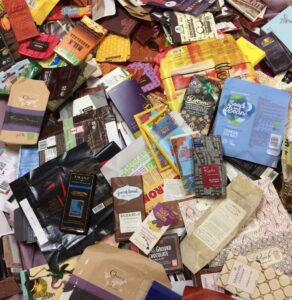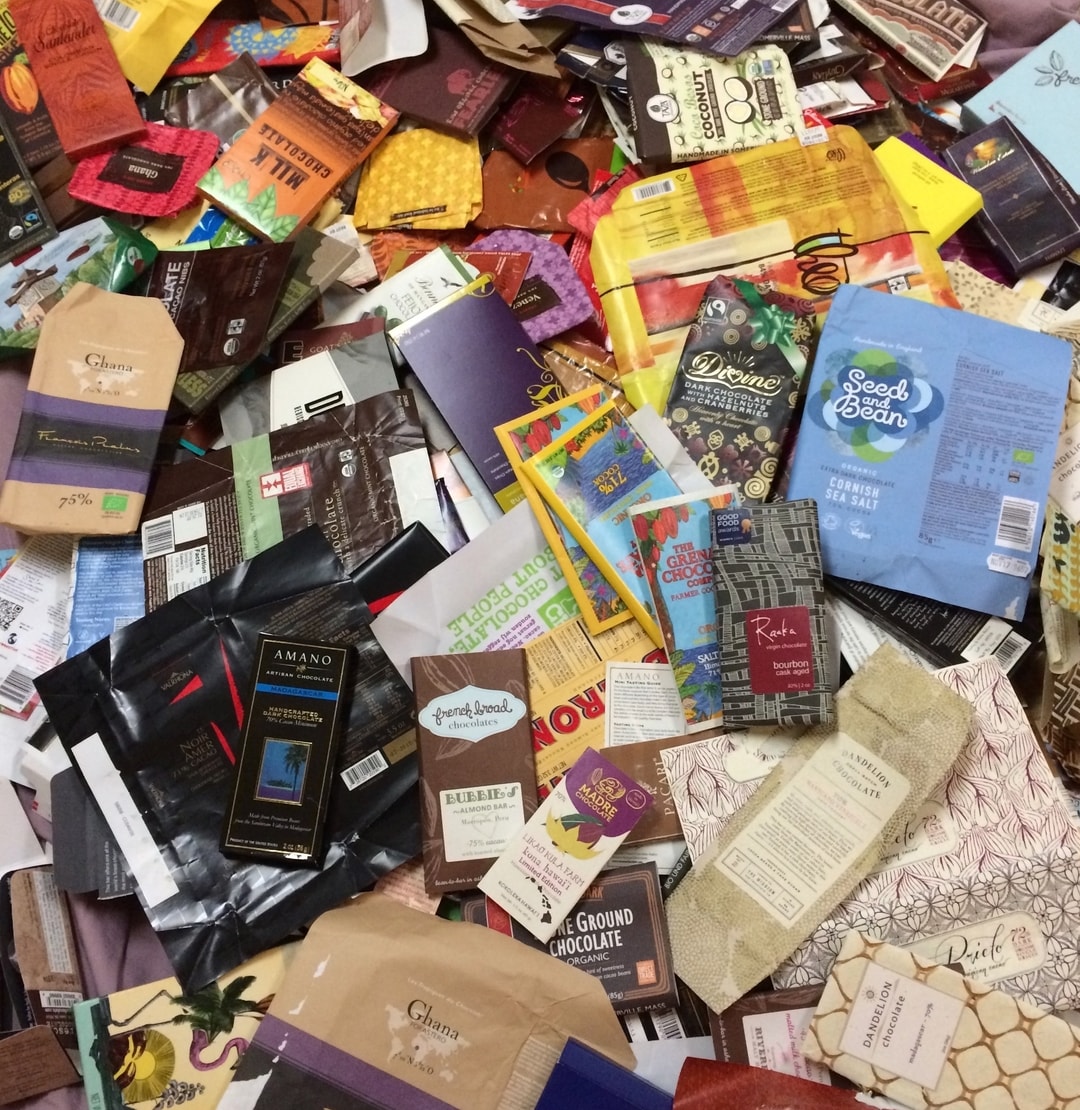
A friend in the chocolate industry once told me he wanted to make a bar that he would call “Pure Evil.”
The cocoa, he said, would be grown by child slaves in Africa and doused with DDT, then sold for less than it took to grow. To turn it into chocolate, it would be blended with mono-crop palm oil, genetically engineered soy lecithin, and mafia-processed cane sugar. It would be manufactured by a company where the CEO made six million times the income of the cocoa farmer.
The friend wanted to know if people would still find the Pure Evil bar delicious, even if they knew how it had been made. I did not like to joke about any of those things, but I could understand his point.
Omnipotent chocolate
We ask a lot of our chocolate. We want it to be the most blissful thing we’ve ever eaten, transporting us out of exhaustion or sadness or even glee into satiated contentment.
We also want chocolate to eradicate labor violations of every kind (including slavery), save the rainforests, protect human health, lift farmers out of poverty, and bring other agricultural sectors along with it besides.
We especially want chocolate to do all of those things in Africa, where we imagine everything is terrible for everyone, all the time.
I have been researching cocoa for eighteen years, and I have never seen a chocolate bar accomplish any of those things singlehandedly. Nor have I come across one that truly was pure evil.
In my experience, all chocolates are a mix of good parts, and less-good parts.
A few do have an impressive CV of achievements, while some have a long road to travel on the justice front. But I see no clear binary division of bars, makers, or “origins” (post coming soon on that word), into beneficent earth-and-people-saving versus Death Star.
For this reason, it has been many years since I bought chocolate based on ethical or environmental considerations. Over the coming months, I will explore why I came to this decision—to eat pretty much any chocolate that I find delicious and satisfying—here on Chocolate Bar None.

Chocolate Bar None: What to expect
The format of posts will vary. Often, I’ll share vignettes from my field research with cocoa farmers and chocolate makers. Most of these will be from West Africa, where I live, but some will be from other places where I have worked or researched.
I may look closely from time to time at a specific bar or brand, or even an individual who works in cocoa or chocolate.
I will also invite my colleagues to answer the question, “What chocolate do you eat and why?” My decision to eat any chocolate, without guilt, may be surprising or even contentious. But it will not stop me from listening with an open mind to other people’s positions, so long as they are thoughtful and evidenced.
I hope you will join me for these explorations, and offer your thoughts too. I am interested to learn what you think.
If you decide to follow this blog, please know two things.
One is that I won’t tell you what chocolate to eat. I will share realities I have witnessed and my analysis of them. But I respect you as a thinking individual, and do not see it as my place to tell you what to consume.
The other is that I do not write about the “dark side” of chocolate, or tell “bittersweet” tales about the industry—and nor do I celebrate chocolate just because it’s chocolate.
I am a scholar, trained to look for complexity, nuance, and contradiction. In my experience, those words pretty well describe the worlds of cocoa and chocolate. No doubt that is why they have kept me intellectually busy for so many years.
A faithful portrayal of the messiness: that is what I offer. See you again soon.




